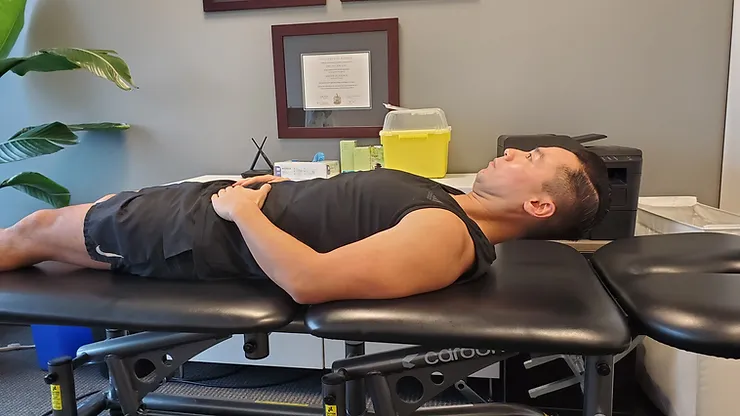You have been feeling neck and shoulder pain for a few months now. However recently you have also started having burning pain that goes down your arm and hand. Prolong sitting at your computer or using your phone makes these symptoms worse. Perhaps the cause of your neck pain could be from degenerative disc disease. Let’s learn what is degenerative disc disease and how you can recover from it.

What is it?
Degenerative disc disease is a condition in which one or more of the discs between the vertebrae of the spine deteriorate or break down, leading to pain, stiffness, and other symptoms. The discs are the cushions between the vertebrae that help to absorb shock and provide flexibility to the spine. These cushion like discs contain water. After the age of 20, the water content in the disc begins to “dry out” making the disc more vulnerable to cracks and tears. As the discs degenerate, they can cause the vertebrae to rub together, leading to irritation and inflammation of the surrounding tissues.
It is important to understand that degenerative disc disease is a normal part of aging
since this “drying out” of the disc happens to everyone after the age of 20. However most people do not have symptoms. Often symptomatic degenerative disc disease is caused by lifestyle factors such and posture, overall health, and fitness. This is great news since it means it can be corrected.
What are the signs and symptoms?
-
Stiffness and decreased range of motion in the neck.
-
Pain in the neck that may radiate to the shoulder, arms, and hands.
-
Numbness and/or tingling in the shoulder, arms, and hands.
-
Weakness in the shoulder, arms, and hands.
How is it treated?
Your physiotherapist will massage, traction, and stretch your neck and shoulder to help you regain neck mobility. Acupuncture can be very effective at reducing neck, arm, and hand pain caused by degenerative disc disease. Acupuncture needles will be placed along your neck, arm, and hand to help decrease pain and promote healing. Your physiotherapist will prescribe exercises to stretch and strengthen your neck.
Your physiotherapist will also help you determine if posture and ergonomics is causing your current symptoms. Forward head posture on computer or laptop can often be the culprit of symptomatic degenerative disc disease. By giving you tips about sitting up straight in a supportive chair, as well as raising your monitors to eye level, you can recover from this injury and prevent re-injury in the future.
Common Home Exercises
Chin tuck
Start in a seated position with your head into a neutral position, and keep your eyes looking straight ahead. Gently tuck your chin towards your chest, so that your chin is parallel to the ground. Hold this position for 5 seconds, then release. Repeat this exercise 10 times for 3 sets.

Deep neck flexor activation
Lye on your back in bed. Start by performing a chin tuck and hold this position. Then lift your head 2 inches off the bed holding for 1 second before putting your head back down. Repeat this for 10-20 repetitions for 3 sets.

Face pulls
This exercise focuses on strengthening your upper back muscles which is important for good posture. Wrap a resistance band around your foot while holding onto both ends of the band. Pull the band toward you until your hands are on either side of your head and squeeze your upper back muscles. Keep your head in a neutral position and avoid pulling your head forward during this exercise.


